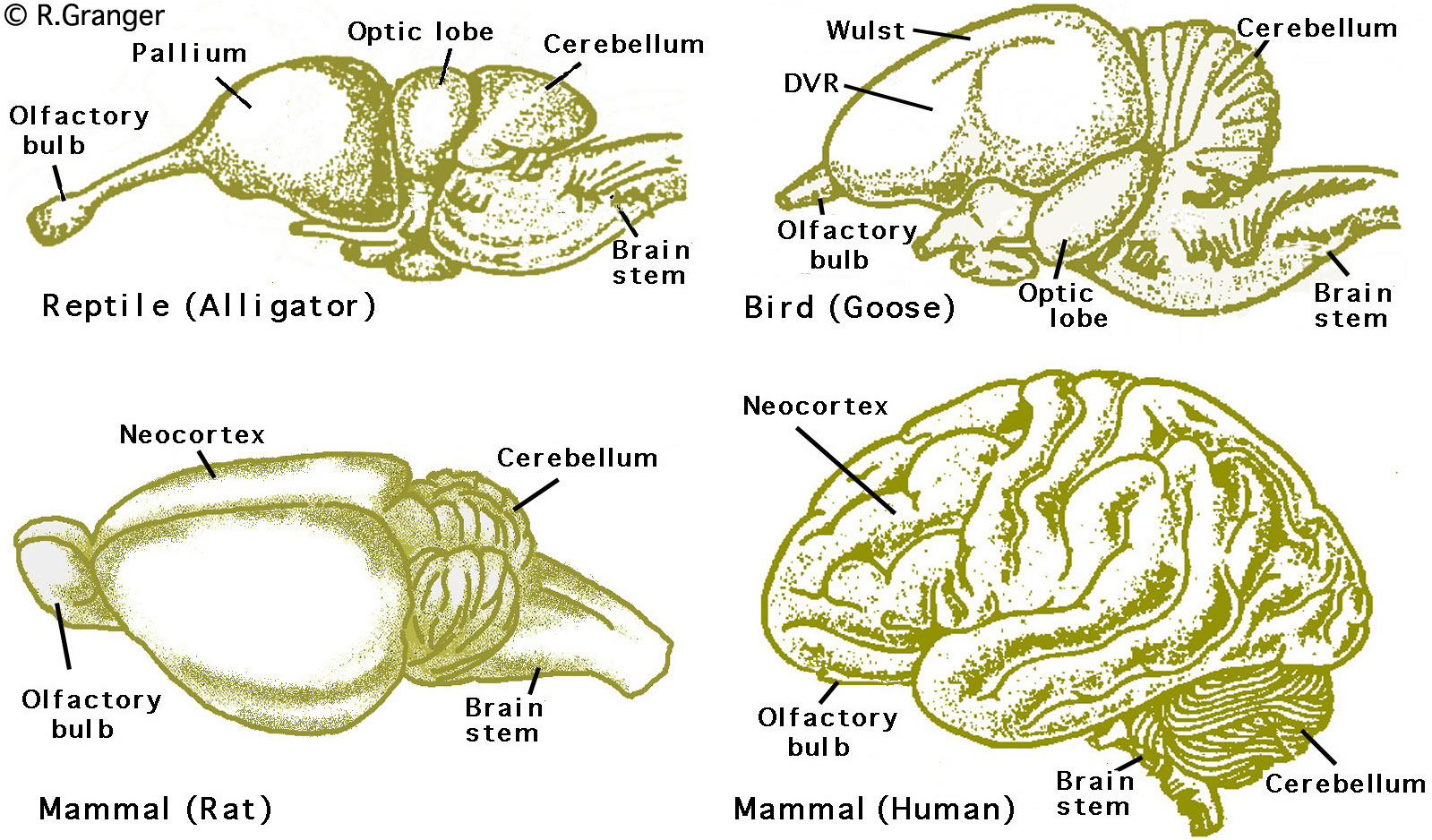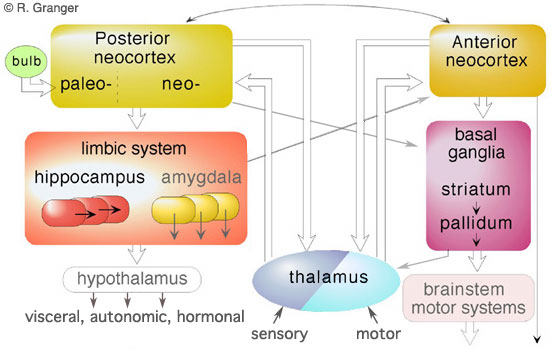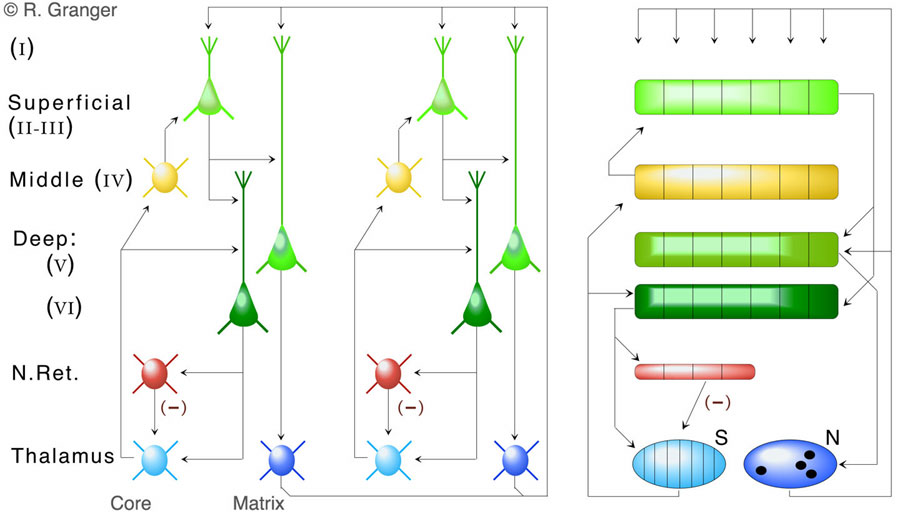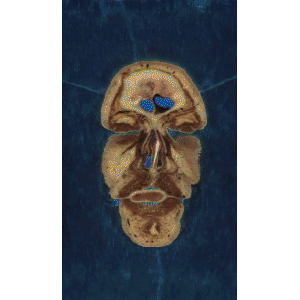|
|
|
|
Brain Engineering Laboratory: Brain Areas
|
|
|
|
Brain Areas
When the mammals diverged from the reptiles, some 200 million years ago, one portion of the reptilian brain, the olfactory paleocortex, became the precursor of the ensuing elaboration and expansion of the brain. The newly created structure, the neocortex, became the largest component of the new mammalian brains. Neocortex takes up more than 30% of a rodent's brain, and the bigger the brain, the larger the percentage of it allometrically that is neocortex, so that more than 70% of a human brain is neocortical.
In the following figure, examples of brains of reptiles, birds, and two mammals are shown (not to scale). Whereas avian brain expands a reptilian structure called the dorsal ventricular ridge (DVR), the mammals elaborate and expand the reptilian paleocortex (part of the reptilian pallium) to become the new mammalian neocortex, and its expansion continues through human brains (which have the largest brain weight per body weight of any mammal).

Despite the increased amount of neocortex, the overall circuit design of the entire forebrain (telencephalon) is remarkably conserved across all mammals. The next figure schematically illustrates the primary components of the telencephalon and their major input and output connections.

The neocortex, and its extensive reciprocal connections with thalamus, is the dominant circuit in our brains; the same pattern of connections is repeated over and over, with only slight variation, throughout the brain. This figure illustrates the primary substructures and connectivity in thalamocortical circuits. The schematic on the left shows the layers and primary intra- and inter-laminar connections among thalamus and cortex; the right shows a simplified outline of this that has become the basis for thalamocortical models.

|

© 2003 TSG.RHG
[GrangerLab]
|
|

